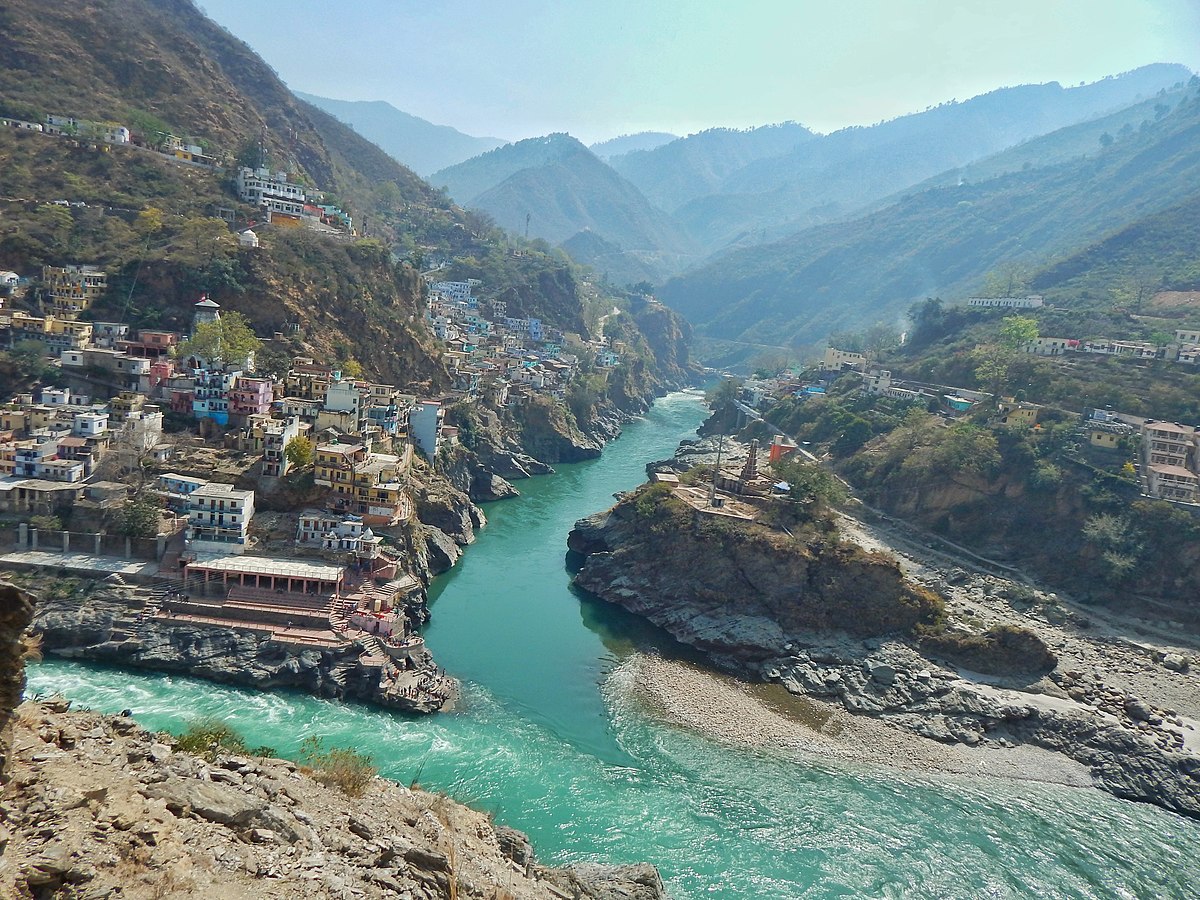Depending on how ripply and rough the river is, this high adventure sport has different difficulty levels. These levels are determined by the existence of rapids caused by changes in river height or the presence of different-sized rocks in the river.
Rafting is undeniably an extremely challenging yet fun-filled activity. You indulge in a boisterous experience of floating on the waves, getting drenched, and relishing both the tranquility and exuberance of the river at the same time.
1. Rishikesh, Uttarakhand
Uttarakhand’s Rishikesh is becoming a famous destination for white water rafting aficionados. The Ganges has class 3 and 4 rapids that range from modest to difficult.

This leisure outdoor sport on Rishikesh’s pristine waters, from Shivpuri to Lakshman Jhula, provides the most magnificent vista.
Other renowned rafting sites are Chandrapuri-Rudraprayag, Matli-Dunda, Harsil-Uttarkashi, and Dharasu-Chham.
2. Mussoorie, Uttarakhand
If the Ganges River is the primary choice for white-water rafting, the Yamuna River is a close second. The Yamuna River has fast grades ranging from 1 to 3. River rafting on the Yamuna, like the Ganges, is suitable for both novice and experienced rafters.

Yamuna’s two river rafting courses, one from Nainbagh to Juddo and the other from Yamuna Bridge to Juddo, entice rafters to its high-volume waters. The Nainbagh to Juddo route is the more popular of the two, with three rapids.
3. Mori, Uttarakhand
Tons River, a tributary of the Yamuna River, is one of the most difficult rafting routes; one must be a skilled rafter.

The Tonnes River’s raging rapids cut through bends and swirls of gushing water. The rapids are generally grade 3 to 4 but can reach difficulty level 5 depending on the volatility.
4. Tehri Garhwal, Uttarakhand
The Bhagirathi River in northern India provides a demanding rafting experience with rapids such as the Chute, Elephant Rock, Sharp S, and Confluence.

On this route, one may also reach The Wall and Daniel Dip, the finest two rapids on the Ganga River. The breathtaking beauty of the Uttarakhand valleys and mountains along this route is a bonus.
5. Rafting in Darjeeling
While Rishikesh and Kolad are prominent rafting sites, Darjeeling is a newcomer to the sport.

The rivers Teesta and Rangeet, which flow down the hills, provide not only a picturesque panorama but also rapids for both novices and those seeking high degrees of excitement.
6. Ladakh
The Indus River is your best choice for a pure adrenaline ride amid the Zanskar mountain range in the mysterious Ladakh area. The beauty of snow-capped peaks, craggy cliffs sheltering Buddhist temples, tiny hamlets, and deep gorges enchants you as you float down Asia’s longest river.

The best aspect is that you may enjoy rafting at a remarkable height of 12,000 feet in the Zanskar Indus River even if you have no prior rafting expertise.
It is nearly hard to convey this emotion in words, and one must experience it to understand what we mean!
7. Spiti, Himachal Pradesh
Are you seeking a once-in-a-lifetime thrill trip across the Himalayan scenery? The effervescent Spiti River, bounded in the south by the Kullu Valley, in the north by Ladakh, and in the east by Tibet, provides you with all of this and more.

The breathtaking ambiance of the twin valleys of Lahaul and Spiti is the centerpiece of this risky trip. Along the rafting journey, you take in the splendor of magnificent glaciers, magnificent mountains, verdant meadows, and tranquil Himalayan communities.
8. Brahmaputra River
Do you have the time and want to enjoy the excitement of rafting at a leisurely pace? If you answered yes, then the Brahmaputra River in eastern India is the place for you. The rafting route starts in Tuting and concludes at Pasighat.

The rafting adventure is filled with unpredictability; you’re surrounded by greenish-blue mountains, lush flora, rocky fissures, and tribal towns.
Rafting on the Brahmaputra River requires two prerequisites: prior rafting expertise and plenty of time, as the full rafting path might take over a week to complete.
Conclusion
To conclude, I can say that With modern facilities, a breathtaking cultural and geographical environment, and easy access to raging rivers, rafting in India is a world-class outdoor activity.
Furthermore, except in the inner line, close to the border areas, there are no substantial permission requirements for river rafting in India. All of this, along with the incredible warmth of the Indian people, makes rafting in India one of the most popular adventure sports in the country.
Initially, the Ganges River in and around Rishikesh was the biggest contributor to river rafting in India. However, many additional rivers in India’s eastern, western, and southern regions have been investigated and offer significant promise for white river rafting.
ALSO READ: 6 Best Places To Visit In India With Family For A Unforgettable Vacation















Comments 1